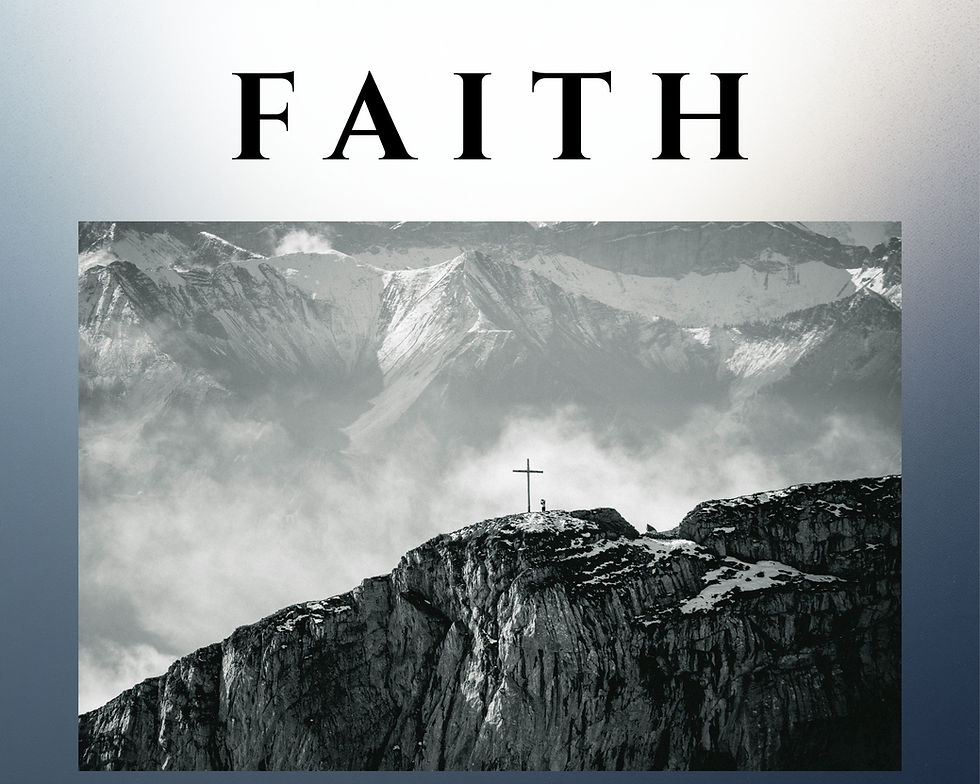As Things Above
- Fr Mark
- Mar 1, 2018
- 3 min read

A moment of confession: I tend to glaze over a bit when reading through the last chapters of the book of Exodus as the details for constructing the tabernacle are spelled out for Moses. I generally pinch myself or get another cup of coffee and try to force myself to take in what I am reading. And sometimes I see things that leap off the page when I am paying attention.
As God gave instructions for the tabernacle in chapters 25-27, four times He says something along the lines of “See that you make everything according to the pattern shown you on the mountain” (see Ex 25:9, 25:40, 26:30 and 27:8). Pattern. In other words, the tabernacle was modeled on something higher and more substantial, and that something was apparently the heavenly realities. Moses on Mt Sinai must have seen the heavens opened and beheld the throne of God, the cherubim, the seven-fold spirit of God, the altar of incense where prayers continually ascended, and perhaps even the Son of God, the One who the New Testament would call the Bread from Heaven, the True Manna, the Bread of Life (see John 6:22ff).
For confirmation that this is the case, I submit that the prophets had similar experiences, although they didn’t get instructions to physically construct a tabernacle or temple. Isaiah’s call begins with a vision of the Lord high and lifted up, with cherubim heralding His holiness (Isaiah 6). And Isaiah was on his face. The book of Isaiah ends with Isaiah describing the New Heavens and the New Earth that will one Day supplant this broken and sin-sick arena.
Similarly, Ezekiel’s call comes with a glimpse of the glory of God on His throne that is carried about upon the four living creatures (each with four faces) with an expanse above them (under the feet of the One on the throne). The wings of these creatures were spread above them and the wings of one touched the wings of another. There was lightning and the sound of many waters. The One on the throne had a human likeness and was glorious and awesome, the “appearance of the likeness of the glory of the Lord.” And Ezekiel was on his face. The last section of Ezekiel is dedicated to describing a glorious new Temple that weaves imagery from Jerusalem, Mt Sinai and the Garden of Eden. And, of course, the temple always represented that God was in the midst of His people (as did Jerusalem, Mt Sinai and Eden).
And then (wait for it….) we come to the New Testament’s last book, the Book of the Revelation (of Jesus Christ). It begins with John beholding one like a Son of Man, whose voice was like the sound of many waters, glorious and awesome. And John is on his face. In chapter four, John looks and sees a door standing open in heaven and voice telling him “Come up here.…” John was immediately in the Spirit and beheld a throne, One on the throne, lightning, peals of thunder, four living creatures (each with four faces), an expanse like a sea of glass before the throne, the sevenfold spirit of God, angelic creatures proclaiming the holiness of God, etc, etc. There’s many more connections, but you get the idea. And then, at the book’s end, we hear of a New Jerusalem coming down from heaven like a Bride adorned for her Bridegroom. We hear of the New Heavens and the New Earth gloriously realized, and the triumphant declaration that “the dwelling place of God is with man.”
I think Moses saw what Isaiah saw; what Ezekiel saw; what John saw. He saw the Lord on His glorious throne, high and lifted up, in the midst of the heavenly realities. This is the pattern Moses was shown that was to determine the construction of the tabernacle. Awesome! And perhaps we should note from all of this that our worship should be more attentive to what we see revealed in the Scriptures. Maybe we shouldn’t do whatever we feel like doing in our worship or what seems right at any given time. Maybe our spaces of worship should reflect the heavenly pattern and help us catch a glimpse of those heavenly realities. Something to chew on.






Comments